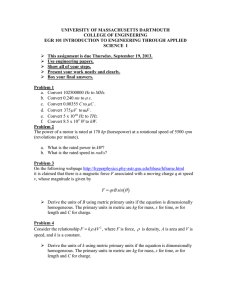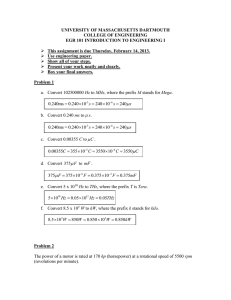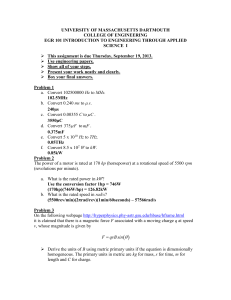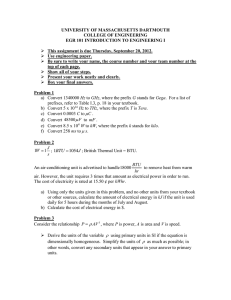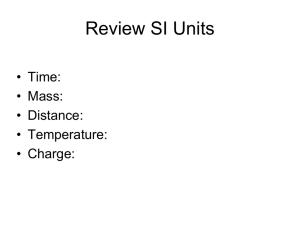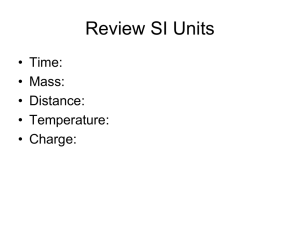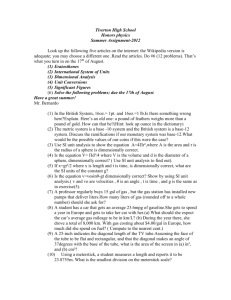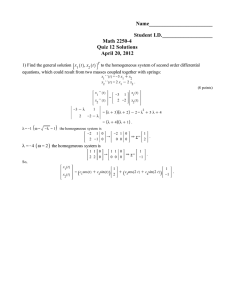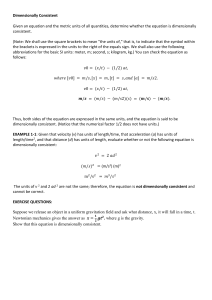UNIVERSITY OF MASSACHUSETTS DARTMOUTH COLLEGE OF ENGINEERING
advertisement
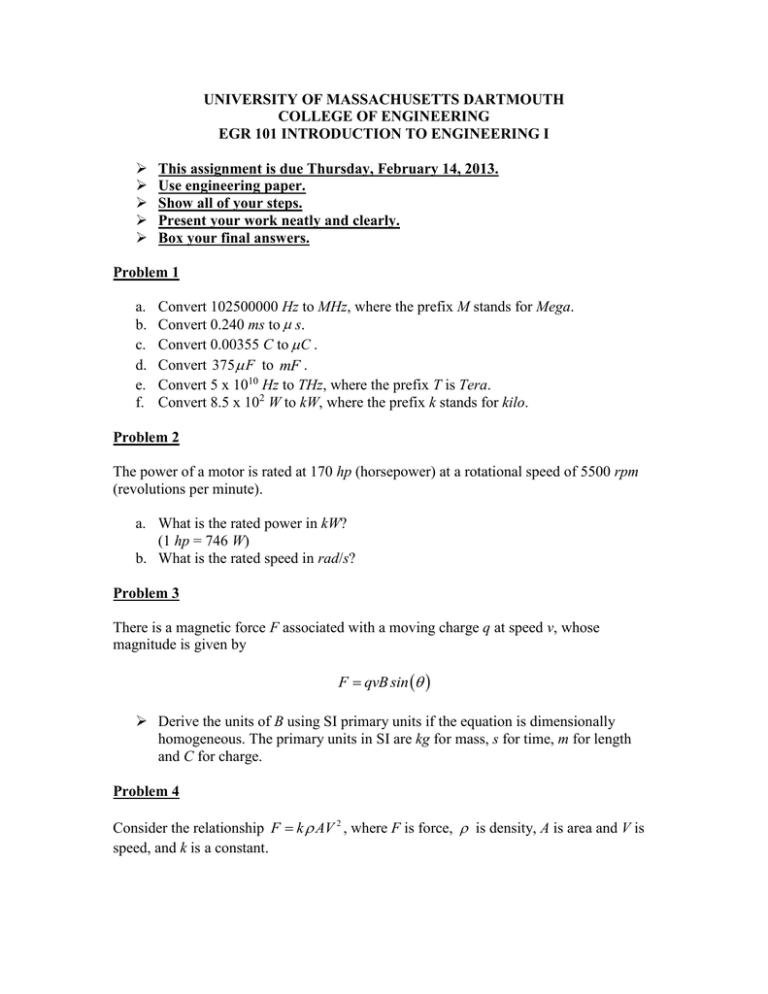
UNIVERSITY OF MASSACHUSETTS DARTMOUTH COLLEGE OF ENGINEERING EGR 101 INTRODUCTION TO ENGINEERING I This assignment is due Thursday, February 14, 2013. Use engineering paper. Show all of your steps. Present your work neatly and clearly. Box your final answers. Problem 1 a. b. c. d. e. f. Convert 102500000 Hz to MHz, where the prefix M stands for Mega. Convert 0.240 ms to s. Convert 0.00355 C to C . Convert 375 F to mF . Convert 5 x 1010 Hz to THz, where the prefix T is Tera. Convert 8.5 x 102 W to kW, where the prefix k stands for kilo. Problem 2 The power of a motor is rated at 170 hp (horsepower) at a rotational speed of 5500 rpm (revolutions per minute). a. What is the rated power in kW? (1 hp = 746 W) b. What is the rated speed in rad/s? Problem 3 There is a magnetic force F associated with a moving charge q at speed v, whose magnitude is given by F qvB sin Derive the units of B using SI primary units if the equation is dimensionally homogeneous. The primary units in SI are kg for mass, s for time, m for length and C for charge. Problem 4 Consider the relationship F k AV 2 , where F is force, is density, A is area and V is speed, and k is a constant. Derive the units of k using SI primary units if the equation is dimensionally homogeneous. The primary units in SI are kg for mass, s for time, m for length and C for charge. Problem 5 Waves from antennas are known as electromagnetic waves. The wave can be described as a sinusoidal electric field E in V/m (Volts/meter). If E is described by the function E Eo cos kx t where x is a spatial coordinate in m and t is time in s; k and are known as the wave number and angular frequency, respectively. What are the units of Eo ? What is the unit of the argument of the cosine function kx t ? What are the units of the wave number k? What are the units of the angular frequency ? Problem 6 Are the following equations dimensionally homogeneous? Ft M 2 gx . F Mx . t2 F MV . t2 F M V. t where F is force in N, M is mass in kg, V is speed in m/s, x is distance in m, t is time in s, and g is the acceleration due to gravity in m/s2.
